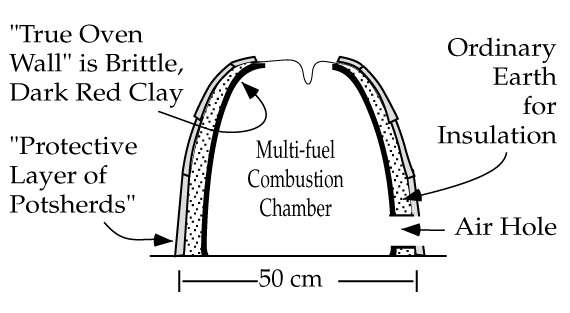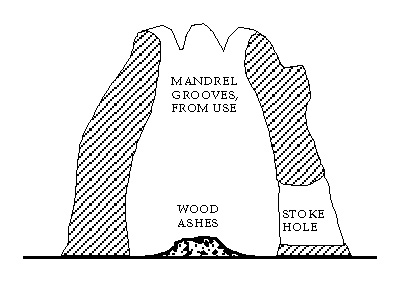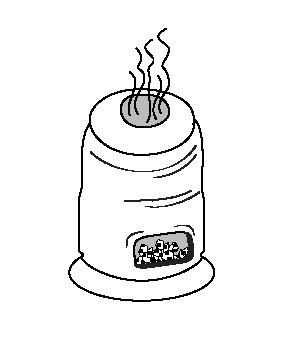the Early Furnace As many of you know I spent a good deal of time researching ancient glassmaking and I placed much of the information gained into my book, A Glassblower's Companion, now in its 4th printing. In many places I found a simple furnace which I describe as a "fireplace with the walls pulled up." By adding some height, a huge gain is made by enabling a sizable increase in thermal temperature. With more combustion area, heat zones are formed (cooler and hotter areas of the fire). Additional ideas can be applied: more insulation, thicker walls, higher heat resistant materials and smaller exit ports for containing the heat, while adding bellows for forced air completes the idea of a high heat furnace capable of making iron, brass, bronze, glass and ceramics. Here are some of the heating devices I found: And here is a copy of When Glass Was One, 1997 (my manifesto for this early furnace work) Password protected: doctg | |
| Here is my favorite furnace symbol, a vertical heating chamber, which is based on archaeological evidence from the ancient city of Nuzi, mid-fifteenth century, B.C. (present day Yorgan Tepe, Iraq). This site was excavated by Richard Starr during 1927-31. |

|
| THIS FURNACE DRAWING to the right represents a cross section of what Richard Starr describes in his Nuzi report. The Nuzi craftsmen had a keen sense of thermal dynamics. This example has a refractory layer of hard, heat resistant material on the inside, backed up by fluffy insulation of ordinary earth which is further covered by "potsherds" to protect everything from wear and tear. This device could not be better engineered today using indigenous materials. | 
|
| This image represents, in cross section, a vertical wood fired beadmaking glory hole in use today in Bida, Africa. With it the craftsmen fashion large glass beads. This implement can be seen in full color in the book The History of Beads (Dubin, Lois Sherr. 1987: p. 123, figure 111). This glory (glassmaker's term for a heating furnace) embodies complete simplicity: It is the true fire pit with walls pulled up with inward curl to capture the heat. | 
|
| Again, on the right, we have a Japanese vertical glory, a device used prior to 1840 (Blair, Dorothy. A History of Glass in Japan, 1973: p. 219, figure 146). This simple charcoal furnace, shaped like a volcano, is similar to the Bida furnace and the Nuzi furnace above. It is my belief that all early glassmaking was accomplished in such a device. As we explore this idea we will find this resonates with most all early pyrotechnical arts. | 
|